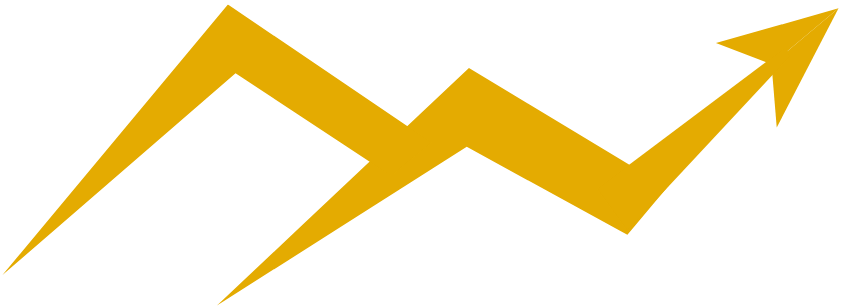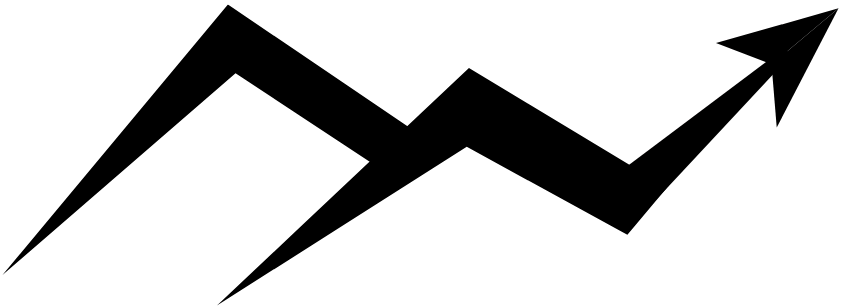Day trading is a fast-paced and dynamic approach to trading where positions are opened and closed within the same day. The goal is to profit from short-term price movements without holding positions overnight, minimizing risks associated with after-hours market volatility.
To succeed as a day trader, it’s essential for you to understand the different trading styles and how they can be applied to varying market conditions. In this blog post, we’ll explore the top 5 day trading styles and how you can use them to improve your trading performance.
1. Trend Trading
Overview
Trend trading is one of the most popular and straightforward styles, focusing on the overall direction of the market. The core idea is to identify whether prices are trending upward or downward and then align trades with that trend.
How It Works
- Uptrend: If prices are forming higher highs and higher lows, traders take long positions (buying).
- Downtrend: If prices are forming lower highs and lower lows, traders take short positions (selling).
Key Tools
Trend traders use technical analysis, employing tools like moving averages, trendlines, and momentum indicators to identify and confirm market trends. While trend trading is often used for longer timeframes, day traders close their positions before the market closes to align with intraday strategies.
Pros
- Can capture substantial price movements when trends are strong.
- Easy to understand and implement with basic technical tools.
- Aligns well with overall market sentiment.
Cons
- Ineffective in ranging or choppy markets.
- Requires patience to stay with the trend while avoiding early exits.
- You won’t be getting in at the beginning of a move, because you’ll wait for the trend to develop first.
Example

2. Support and Resistance Trading
Overview
Support and resistance trading involves identifying key price levels where the market has historically reversed or paused. These levels act as barriers that traders can use to make informed entry and exit decisions.
How It Works
- Support Levels: Prices tend to bounce off support levels, providing opportunities for long trades (buying).
- Resistance Levels: Prices often struggle to break through resistance, creating opportunities for short trades (selling).
Key Tools
Support and resistance levels are identified using horizontal lines, trendlines, and technical indicators like pivot points or Fibonacci retracements. Price action analysis helps traders confirm whether these levels are holding or breaking.
Pros
- Provides clear entry and exit points.
- Effective in both trending and ranging markets.
- Can be combined with other strategies for improved accuracy.
Cons
- False breakouts can result in losses.
- Requires consistent monitoring to react to market changes.
Example
3. Scalping
Overview
Scalping is a high-intensity trading style that focuses on taking small, frequent profits from minor price fluctuations. Scalpers typically execute multiple trades per day, aiming for high win rates.
How It Works
Scalping involves rapid decision-making and ultra-tight stop-losses to manage risk. Traders typically use highly liquid assets with small bid-ask spreads to ensure quick execution and minimize transaction costs.
Key Tools
- Short-term charts (1- to 5-minute intervals).
- Advanced trading platforms with fast execution speeds.
- Support and resistance levels for precise entries and exits.
- Hot keys are normally used.
Pros
- Frequent opportunities to profit throughout the day.
- Reduces exposure to significant market events or overnight risks.
Cons
- High-pressure and mentally demanding style.
- Transaction costs can quickly add up, eating into profits.
Example

4. Mean Reversion
Overview
The mean reversion strategy assumes that prices will eventually revert to their historical averages. This style is particularly effective in ranging or consolidating markets.
How It Works
- Overbought: When prices rise significantly above their average, traders may take short positions (selling), anticipating a pullback.
- Oversold: When prices drop significantly below their average, traders may take long positions (buying), expecting a rebound.
Key Tools
Technical indicators like moving averages, Bollinger Bands, and oscillators (e.g., RSI) are used to identify deviations from the mean.
Pros
- Works well in stable or sideways markets.
- Provides clear entry and exit signals based on statistical measures.
Cons
- Ineffective in trending markets where prices deviate further from the average.
- Requires precise timing to avoid being caught in sustained momentum.
Example

5. Order Flow Trading
Overview
Order flow trading focuses on analyzing the activity within the order book to understand supply and demand dynamics. By studying the flow of buy and sell orders, traders can anticipate price movements before they occur.
How It Works
- Buy Pressure: If the order book shows a high volume of buy orders, prices may rise.
- Sell Pressure: If there is an influx of sell orders, prices may decline.
Key Tools
Order flow trading requires specialized software to access and interpret real-time order book data. Heatmaps and depth-of-market tools are commonly used.
Pros
- Provides a granular view of market sentiment and liquidity.
- Helps traders anticipate moves before they are reflected in the price.
Cons
- Requires advanced tools and experience to interpret order book data.
- Can be overwhelming for beginners due to its complexity.
Example
Check out our post on What is order flow trading to learn more!
How to Choose the Right Day Trading Style
The best trading style for you depends on your goals, risk tolerance, and available time. Here are a few tips to help you decide:
- Time Commitment: Scalping requires constant attention, while trend and support/resistance trading offer more flexibility.
- Risk Appetite: Scalping and order flow trading are better suited for traders who can handle high intensity and quick decisions. Mean reversion and trend trading are more relaxed but require discipline and patience.
- Market Conditions: Use trend trading during directional markets and mean reversion in ranging markets. Support and resistance trading can adapt to both scenarios.
Final Thoughts
Mastering day trading requires discipline, practice, and a solid understanding of the different styles. Whether you choose trend trading, support and resistance, scalping, mean reversion, or order flow trading, the key to success lies in consistent application and risk management. As you grow as a trader you will have more tools in your toolbelt to identify trades.
Experiment with these styles in demo accounts to see which aligns best with your personality and trading goals. Remember, the market is ever-changing, so adaptability and continuous learning are essential for long-term success.
FAQ
1. What is the easiest day trading style for beginners?
Support and resistance trading is often considered beginner-friendly due to its simplicity and reliance on key price levels. If you are a beginner, check out our post on how to trade futures.
2. Which day trading style is the most profitable?
Profitability depends on market conditions, the trader’s skill level, and risk management. Scalping can generate quick returns, but trend trading often captures larger gains over time.
3. Can I use these strategies in any market?
Yes, these strategies can be applied to stocks, commodities, cryptocurrencies, or any liquid market with sufficient volatility.
4. What tools do I need for day trading?
Essential tools include a trading platform with real-time charting, technical indicators, and for advanced traders, order flow software for analyzing market depth. We recommend Sierra Chart as it’s an incredibly performant and flexible platform
5. How much capital do I need to start day trading?
The amount depends on the market and style. Scalping and order flow trading may require more capital due to frequent trades and associated costs. Always trade with an amount you can afford to lose. For futures trading we recommend EdgeClear because of their unparalleled support and fantastic margin and fees.
By exploring these strategies and fine-tuning your approach, you’ll be better equipped to navigate the dynamic world of day trading. Happy trading!



